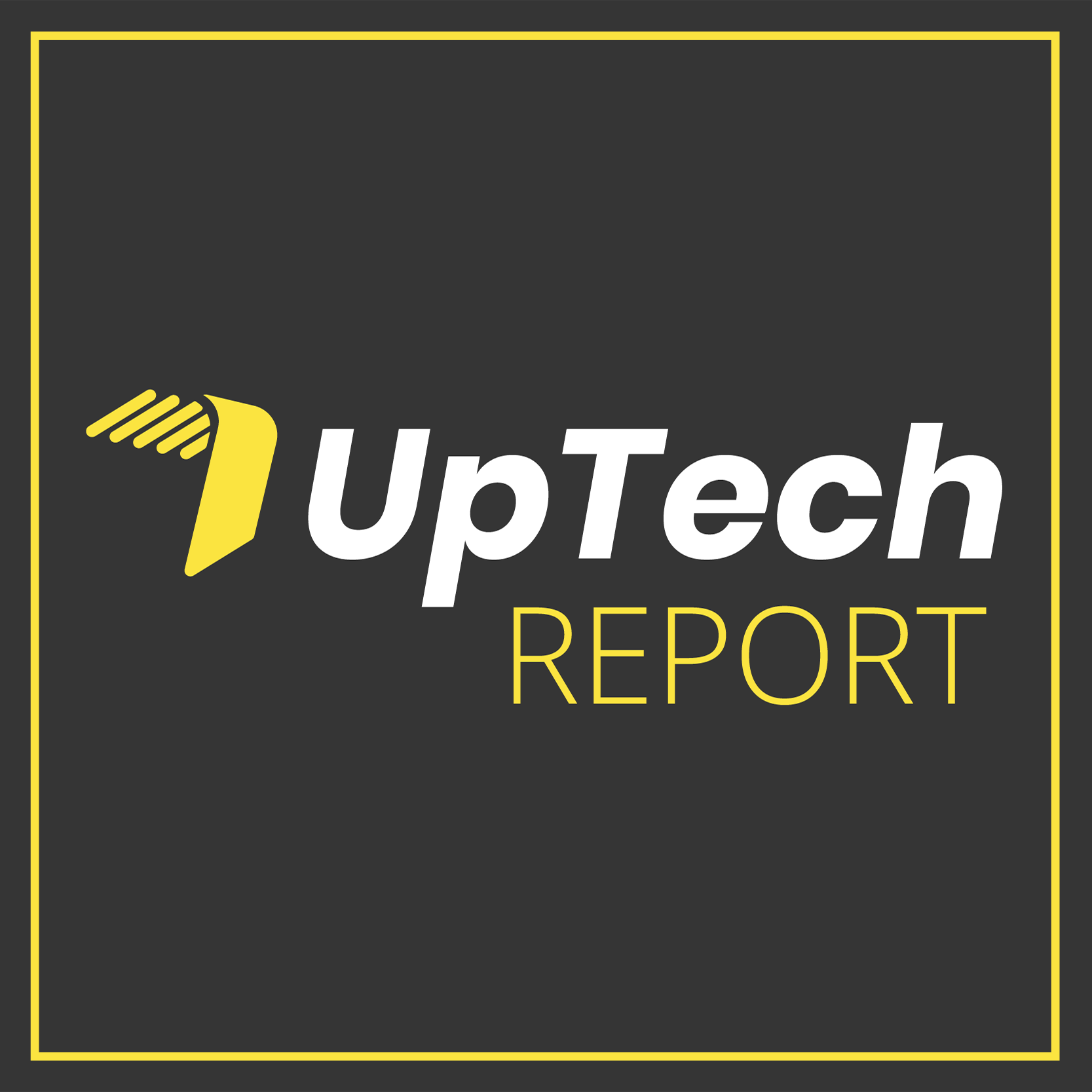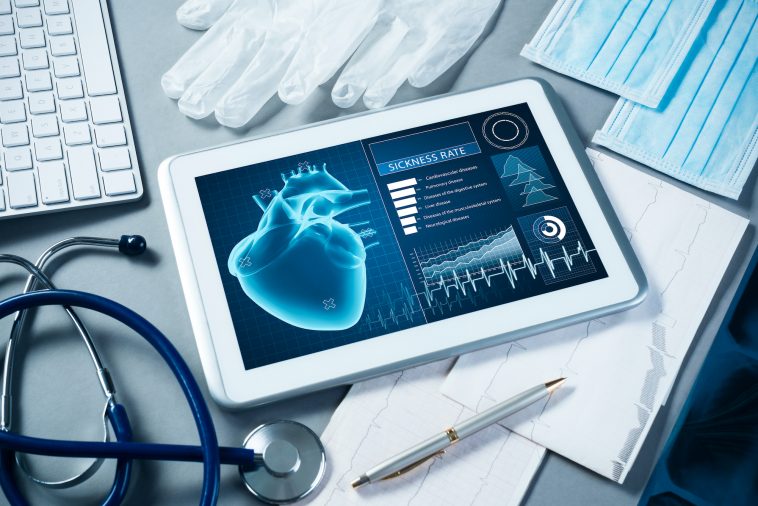The U.S. healthcare sector has proven one of the most resistant to technological change for a host of reasons. Each state, hospital, and insurance company relies on proprietary technologies with no standardized protocols.
Patient care is continual and urgent (one can’t exactly clear out a hospital for a few days to upgrade all the systems). And with people’s lives at stake, managers are understandably cautious about experimenting with unproven solutions.
But gradually, change has happened—and it appears to be accelerating. A new wave of healthcare tech is emerging that portends a transformation on how people give and receive care.
We interviewed dozens of healthcare technology startup founders and identified six exciting solutions we believe are worth keeping an eye on. They include everything from how your health data is recorded and transmitted, to changing the way your brain functions.
eVisit
The eVisit telehealth platform may seem extraordinarily prescient, considering that it was conceived and developed before the COVID-19 pandemic hit. Now, with telehealth transforming from novel to essential, literally overnight, the future of medicine has arrived with a blast. But this system is more than just Zoom for your doctor.
What makes it unique is its ability to integrate with other systems to gather medical records, analyze insurance info, and streamline the check-in process, making receiving care from home the seamless experience we’d hope for in the modern era.
“Patients will go through the intake process, which looks and feels very much like the experience you’d have in a clinic. We collect your demographic information, your insurance information, we ping the clearing houses to help understand what your co-pays are, your reimbursement rates, the deductible you’ve met, you select your pharmacy, and you submit a credit card to pay for the visit.
And then you’re provided with a list of providers you can select from. Usually, it’s your own doctor. …the provider receives a text message notification that they have a patient in the waiting room, they log in and they can review your chart. And they’ll go through the same experience that you’d have in a clinic face to face.”
-Bret Larsen, founder and CEO
Watch our full interview with Bret Larsen
DHIT
It has long been known that the U.S. healthcare system is in great need of a digital transformation. Health records, insurance information, and doctor communication all feels stuck in a perpetual state of techno catch up.
A part of the problem is that the U.S. healthcare system is in actuality thousands of microsystems, each with their own protocols, processes, and systems. But the Digital Health Institute for Transformation is endeavoring to bring those systems together with what they call the Health Utility Grid, a technological framework that will do to the healthcare industry what high-speed internet did for personal computers.
Currently, efforts to establish the Health Utility Grid are underway in North Carolina, and the hopes are to expand from there.
“Five years from now, my expectation is that the Health Utility Grid is a brand new public utility that is rolled out throughout the state of North Carolina end to end and has made its way through the entire Southeast, if not through the country as a brand new 21st century infrastructure to power our healthcare system and our life.”
-Michael Levy, CEO
Watch our full interview with Michael Levy
Deep Lens
A crucial need for timely and efficient healthcare coordination and collaboration happens in medical trials. Pharmaceutical companies require patients suffering from specific conditions, while meeting a spectrum of criteria—and of course, the patients need treatment and must be made aware of the option to participate in a trial, most often within a narrow timeframe.
Deep Lens uses artificial intelligence to help coordinate this complex process, allowing researchers to find the right patients, and maximizing the opportunities for patients to volunteer for new treatments. Deep Lens also provides a free digital pathology cloud platform called VIPER that helps cancer researchers coordinate data to improve outcomes.
“I see Deep Lens and the VIPER platform becoming the de facto system, and really enabling care teams and the communication between the providers and the pharma sponsors really being that enabler. And when folks turn to a system or a technology or a process that wants to facilitate optimizing how their patients are getting on clinical trials—and then even on the sponsor side, being able to increase their drug to market—Deep Lens is who they turn to.”
-Dave Billiter, Deep Lens founder and CEO
Watch our full interview with Dave Billiter
Embodied Labs
Caregiving has not only experienced a technological transformation, but a philosophical one as well. Once thought of as clinical functionaries, doctors, nurses, and homecare providers have begun to recognize the importance of understanding the perspectives of those they treat—their stories, their burdens, their daily experiences.
And this where the explosion of VR has the potential to create an entirely new way to use technology in the field of medicine. Embodied Labs is doing just that with VR software that helps train caregivers to understand the people they’re caring for by creating immersive experiences emulating the lives of those in need of care. And the potential extends well beyond healthcare to a wide variety of sectors looking to expand their understanding of people being served.
“We have a lot of customers in the healthcare services space. We have academic institutions that integrate Embodied Labs into their training programs; we have corporate clients who serve older adults and use this to train their employees. We have lots of senior services groups, like a home care agency, a hospice, or a senior living community that uses this for training their staff and community education. But one of my favorite examples, and where we’ve really grown, is that we work with several municipal governments, their divisions of adult protective services and this group, called area agencies on aging, which is in nearly every county of the United States—they take Embodied Labs and champion the technology, the hardware, and they enable our software platform to train their social workers, their nurses, their community educators.”
-Carrie Shaw, Embodied Labs founder and CEO
Watch our full interview with Carrie Shaw
Healium
Another exciting use of VR in the healthcare field is Healium, which uses immersive technology to train your brain to manage stress. Purchased as a recurring subscription, Healium offers guided meditations in nature environments, immersive stories, and a video curriculum on neuromeditation.
They also sell the BrainLink EEG Headband, a device that works in tandem with the VR headset to provide visual neurofeedback to improve mental resilience. The software also works with the Apple Watch. And if the VR headset is out of reach, augmented reality options are available for your phone. They also offer a business plan for companies looking to reduce stress among their teams.
“Healium is used in enterprises and large government contractors around the world in areas of acute situational or confined stress. The American Red Cross has used Healium before with blood donations to allow people to be somewhere else. It was being used on the front lines, most recently for healthcare workers to try to combat compassion fatigue. It’s used in schools to help students develop a mind-body connection and by teachers who just need some virtual peace. Healium’s horizontally marketed because stress is such a huge problem—it’s a $300 billion profit and people killer. This is not a niche market. And specifically in the wake of what we’re seeing with the pandemic, this is the stress Olympics and not everyone is trained for it. So the ability to have something that quickly downshifts the nervous system in a drugless way that you don’t have to go through a long, training about meditation or mindfulness has value.”
-Sarah Hill, Healium founder and CEO
Watch our full interview with Sarah Hill
Saykara
Digital technology has certainly done a great deal for medical record keeping. Though there is still much work to be done coordinating and integrating systems, can one even imagine the days when all your health data was stored in a basement file cabinet? But regardless of where and how your data gets recorded, doctors still spend a lot of time recording it.
This is where Saykara is pioneering dramatic new ways for providers to document their patient interactions without spending half their days punching at a keyboard. It uses AI language recognition to process key information exchanged between doctors and patients to later be presented and reviewed at a fraction of the time it would take to assemble manually.
This is how technology should function—getting out of the way to allow professionals to focus on their tasks.
“In this country physicians spend an inordinate amount of time on administrative tasks, such as documenting patient care, interacting with EHRs to put orders, and things like that. It’s a huge cause of physician burnout, not to mention productivity, and loss of revenue for health systems. Interestingly, it’s universal across all specialties. Pretty much every physician you talk to will say, I just spend way too much time on my keyboard. I spend more time on my keyboard than I do seeing patients. What we’re doing by automating the documentation process by listening in on doctor-patient conversations and creating those clinical notes automatically, we’re relieving physicians of that burden, and allowing them to do what they really signed up to do, which is see patients and provide care.”
-Harjinder Sandhu, Saykara founder and CEO
Watch our full interview with Harjinder Sandhu
SUBSCRIBE
YouTube | LinkedIn | Twitter| Podcast





